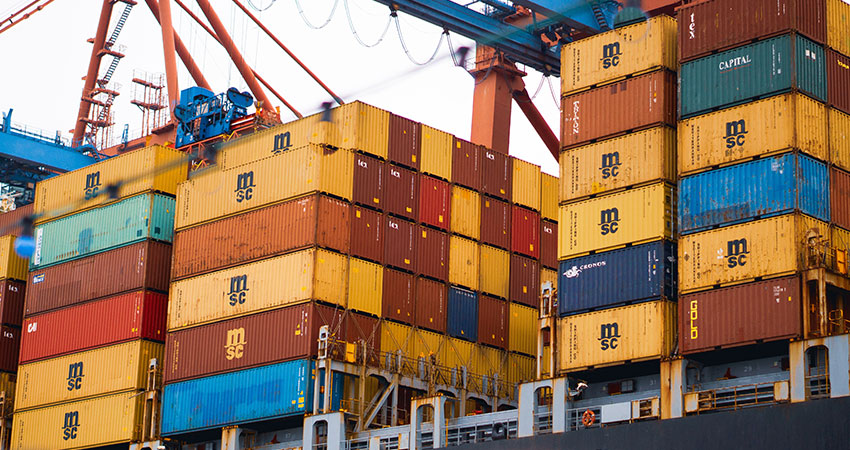One of the more tedious, costly, non-secure and eco-harmful aspects of global ecommerce is the constant flow of documents. With millions of shipping containers in motion at any given time, the number of copies exchanged between business partners, brokers and government orgs becomes vast. Even today, the majority of customs documents, bills of lading, contracts, manifests and the like are done on paper.
Mistakes are costly. If an error is found on a document while a container is in ocean transit, this often requires a corrected piece to be flown ahead, since port documents must be in place prior to arrival. The cost factors to these grotesque inefficiencies are obvious. Thus, it is no surprise that transmission of ecommerce logistics documents is turning digital, and in particular, via blockchain.
What makes this groundbreaking is that antiquated, manual, difficult to track but easily forged/altered documentation systems are now completed in blockchain. It is a platform that seeks to connect the full ecommerce supply chain ecosystem from start to finish: Ports, ocean/air/rail/truck carriers, customs, freight forwarders, package shippers and more. The reward is massive cost savings.
Blockchain in Ecommerce Logistics
How? Blockchain is a decentralized ledger of transactions. Only authorized parties to a transaction can access the transaction, and every step is independently verified and audited multiple times along the digital pathway, giving authorized participants real time transparency and data in a form that is both instant and non-alterable. Records cannot be secretly changed or deleted. This in turn removes the need for third-party intermediaries who once were required for verifying, coordinating and recording actions.
The opportunities for substantial cost savings for e-tailers and SMEs via blockchain permeate the entire realm of logistics. First and foremost, improvements in efficiency via ultra-secure transmission, recording, tracking and accessing of data and documents in real time. Inventory and location tracking. Smart contracts. Dispute resolution. Invoices and payments.
And, critically, it can eliminate the need for middlemen. Up to five middlemen can be necessary for even simple queries, such as the location and status of a shipping container. Another study showed a container went through 30 different organizations with 200+ pieces of documentation with manual data entry. The risk of error is high. Every firm gets a slice of the pie. It adds up, quickly.
Cold Cash Money
How much will excising inefficient processes benefit logistics by using blockchain? One source says up to 40%. That’s likely best case. A blog entry from IBM states around 10%. The World Trade Organization says 17.5%, and that the savings of shipping costs could result in 2% yearly growth in global trade, to a cumulated growth of 31-34% over the next 15 years.
Now, the penny drops: in 2021 the global shipping trade was approximately $28.5 trillion dollars. Ecommerce in 2021 stood at around $4.9 trillion dollars.
Using the WTO’s figures, global trade would see a yearly growth of $570 billion per year, with a resultant increase in employment and GDP expansion, by using blockchain. As another example, Maersk reported $26.7B in operating costs in 2021. A conservative estimate is Maersk having $700MM in annual savings using blockchain.
For shippers, the IBM blog stated that approximately 20% of each container’s shipping cost is administration related. Maersk shipped 4.1 million TEU (twenty-foot equivalent) containers in 2020. Rates from China-Europe are around $11,500, and China-Long Beach hovers around $9000, with a mean rate of $10,250. Thus, if clients used blockchain, conservative estimated savings would be $8.4 billion dollars.
Conclusion
Scaling up will be a deciding factor and as of 2022, blockchain platform TradeLens is one of the largest with over 300 members, including 80 terminals and 16 customs offices. It collects data from more than 600 ports and terminals, has tracked 30 million container shipments, 1.5 billion container status events, and approximately 13 million published documents to date.
Approximately 61% of global capacity is on TradeLens, so critical mass is likely close to being attained. Very large shipping companies are on board—Maersk, MSC, CGM/CMA, Hapag-Lloyd, ONE, ZIM and PIL, as well as CSX and Canadian Pacific railroads. As well, government customs entities from the United States, Jordan, Thailand, Azerbaijan, Malaysia, Indonesia, Saudi Arabia and more, plus ports and terminals all over the world, are on the platform.
Implementation is an issue, but the largest players are clearly on board with IT and API integration. Competition comes from an Oracle-powered consortium, the not-for-profit Global Shipping Business Network, that includes Cosco, CGM/CMA, Hapag-Lloyd, Shanghai International Port Group, Evergreen and Yang Ming. Interoperability appears to be on the table via standardization protocols.
For ecommerce and retailer companies looking to run lean and increase profits, where can savings be found? It’s in logistics blockchain, and tons of it, from improved efficiency, speed, accuracy and cutting out unneeded partners in ecommerce logistics. Blockchain may be the future of logistics documentation flow. The money involved is just too potent to ignore.
David Zartman is the Senior Ecommerce Marketing Director at Cubework

